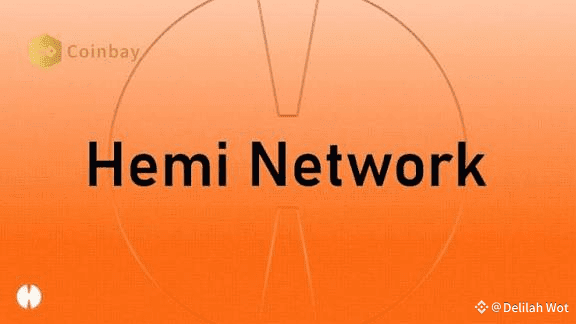Crafting Composability: How Native Bitcoin Utility Begets the Next Wave of DeFi
The world of decentralized finance (DeFi) has largely blossomed outside the orbit of Bitcoin’s core network. Ethereum, Solana and others have taken the lead in building smart-contract ecosystems rich with liquidity, yield and complexity. Meanwhile, Bitcoin has remained the fortress of store-of-value strong, secure, but under-leveraged in terms of application layer innovation.
What if the next frontier of DeFi isn’t just on new chains but on augmenting Bitcoin itself, letting it play both the bedrock and the sandbox of financial innovation? The architecture described by the protocol seeks to actualize exactly that.
A Review of Bitcoin’s Untapped Potential
Bitcoin has long been lauded for its security model, decentralisation, censorship resistance and network effect. Its market cap dwarfs that of many others. Yet when one looks at financial primitives lending, stablecoins, composable dApps Bitcoin’s direct involvement is limited. Many of those assets and ecosystems rely on wrapped versions of BTC or separate chains entirely.
This gap creates interesting dynamics: a large portion of total crypto value is “sleeping” relative to active protocols. Unlocking this value would require making Bitcoin not just a passive asset, but an active participant in the application layer.
The Innovation Layer: Embedding and Interoperability
The cornerstone of this innovation layer is the embedding of a full Bitcoin node inside an EVM-compatible environment known as the hVM. Through this embedding:
Smart contracts can query Bitcoin UTXOs, transactions and chain history without relying on bridging.
Developers can build applications where native BTC (not wrappers) are used in lending, yield, and other DeFi protocols.
Cross-chain operations become native: assets, contracts and logic flow between Bitcoin and Ethereum ecosystems via protocol-level tunnels.
The Security Approach: Securing with Bitcoin
One of the major fears for developers and users is chain risk. When you layer new protocols on top of Bitcoin or rely on bridges, you often inherit new attack surfaces. The architecture addresses this by anchoring the layer’s state into Bitcoin using PoP. In effect, transactions are final once they tie into Bitcoin’s chain giving deep security and immutability.
This security inheritance is not theoretical it aims to make the “programmable Bitcoin” layer as secure as the base layer, not simply faster or lighter. The focus is not on compromising trust but on extending utility.
Use-cases Emerging
With such architectures, multiple real-world use-cases emerge:
Native BTC lending and borrowing: rather than wrapped versions, loans can be collateralised with actual BTC.
Yield markets built directly on BTC liquidity, tapping Bitcoin’s deep liquidity.
Composable protocols where BTC and ETH assets, contracts and identities interoperate.
Non-custodial flows: because bitcoin state is directly accessible, custodial risk is reduced.
Cross-chain DAOs: governance structures that draw upon both Bitcoin and Ethereum communities.
Token Dynamics: The Role of $HEMI
At the heart of this system is the network’s native token. Beyond being a speculative instrument, it plays key operational roles: gas/fees, staking, governance, security bonding. With ~10 billion total supply and tokenomics designed to favour community and ecosystem growth (~32%) over early investor extraction, the incentive structure aims for broad participation.
Importantly, when network usage rises as assets move, yield markets develop, and protocols deploy the token inherits real utility. That alignment between network growth and token value is essential.
Developer Empowerment
The protocol emphasises developer tooling to reduce friction:
Lightweight SDKs, pre-built modules for BTC data queries.
Modular design allowing custom networks (“chainbuilders”) that tap the base security layer.
Infrastructure that abstracts away complexity of Bitcoin/Ethereum integration so developers can focus on features, not plumbing.
By lowering the barrier to building, the ecosystem can attract more creative use-cases, from DeFi to gaming and beyond.
Ecosystem & Investment Momentum
Backing and ecosystem traction matter. With over $1.2 billion TVL and 100,000+ users, the network already has non-trivial scale. Also, major funds and accelerators have invested, signalling investor belief in the architecture. The launch of the native token further crystallises the vision.
Strategic Implications
This development signals a shift in how we think about blockchain layers:
The notion of “one chain to rule them all” is evolving into “many chains collaborating in one supernetwork”.
Value doesn’t just need to move it needs to flow naturally across ecosystems.
Security and utility need not be trade-offs: you can inherit both if architecture is properly designed.
Roadblocks and What It Takes
However, the path is not smooth:
Developers must adopt the new paradigm. Even the best infrastructure fails without active applications.
Liquidity must migrate; bringing BTC into active use takes incentives, time and trust.
Market timing matters: in bear markets, deep infrastructure may face headwinds.
Regulation: using BTC in DeFi layers touches regulatory domains of asset custody, lending, and cross-chain movement.
Looking Forward
In the grand view, this is not just a protocol but a platform thesis. A paradigm in which the world’s largest crypto asset becomes active infrastructure rather than just a store of value. It speaks to a time when building on Bitcoin isn’t a compromise, but the best launching pad for innovation.
For token-holders, developers, and participants, the native token stands as the coordination mechanism. If applications scale, liquidity flows and ecosystems interconnect, the upside becomes meaningful because the token is embedded in the system’s core architecture.
Ultimately, this is the kind of evolution that could define the next chapter of Web3 not by creating another island, but by uniting continents. The confluence of Bitcoin’s security and Ethereum’s programmability into one layer reframes how we build, interact and value digital assets.


